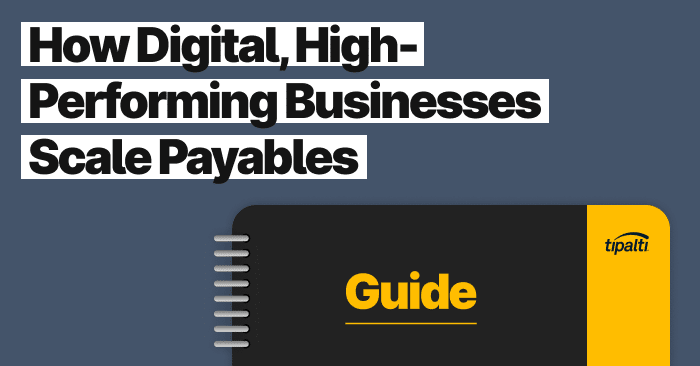
Tired of dealing with complex and tedious payables challenges? See how high-performing digital businesses are scaling payables.
“E-commerce is a fickle space where dozens of retailers offer the same or similar products. For the high-performing affiliate, that means whatever awesome campaign they might have developed for you, they could easily change that ‘Buy’ link to another program if you cross them.”
Affiliate programs are excellent marketing vehicles to drive immediate demand with the side benefit of improving awareness and SEO for products and services. While there are numerous affiliate networks that might fit your offer, e-commerce companies may also look to create an in-house program. Developing a program in-house can be challenging, particularly if you become extraordinarily popular.
That requires a focused scalability strategy so your team doesn’t get buried in affiliate management minutiae. In getting ready for Affiliate Summit, here are some key operational strategies e-commerce companies should use to develop their own affiliate programs.
Establish performance tracking
Sounds obvious, but it’s crucial to have a performance tracking framework in place. Affiliates need to feel confident in their numbers, and how they’re paid is driven by their performance data. There are excellent, proven solutions in the market including Cake, Hitpath, and LinkTrust. These solutions simplify the performance management side of the business. Each has a specific fit depending on your needs.
Bring on SEO/content-savvy affiliates in your space
The best affiliates understand how to attract and motivate someone to act on a buy decision, which is usually through compelling content. That includes articles, videos, social media, newsletters, and captive memberships. Of course, the identification of potential affiliates is just a first step. The more successful an affiliate is, the chances are they will be more discriminant as to what programs they participate in. Generally, they have a limit to how much they can push the influencer button on one product or service. That said, their content has an intrinsic, long-term search engine value. So, choose your affiliates wisely, and hang on to them.
Leverage global affiliates
Want to grow quickly in numbers? Go global. Affiliate marketing has become an international crowdsourcing model for great reason. The reach can be astronomical and, in general, affiliates in other countries have a smaller commission rate or they’re more “appreciative” of a generous, U.S.-based rate. The biggest challenge will be paying them effectively and efficiently as cross-border payments to affiliates can be a complicated matter involving tax considerations, OFAC regulations, payee fraud, and a range of banking compliance. Lesser programs have actually been shut down by their banks because of payment issues. The key to making full-proof global affiliate payments is strong onboarding.
Simplify affiliate onboarding
Getting affiliates ready to contribute to the program should be a high priority. After all, in the digital world (and in particular with global affiliates), you’re not likely to have many one-to-one encounters with partners. You need to rely on technology to do your job. Self-service is the key here. Have affiliates onboard themselves through a portal, complete with their contact details, payment preferences, account information, and tax identification. This takes all the effort off your own team, who can then focus on vetting affiliates and expanding the relationship.
Understand the importance of affiliate payments
Affiliate program payments are tantamount to success. Why? What other indicator do affiliates have to go by to continue driving business for you? E-commerce is a fickle space where dozens of retailers offer the same or similar products. For the high-performing affiliate, that means whatever awesome campaign they might have developed for you, they could easily change that ‘Buy’ link to another program if you cross them. 48 percent of affiliates have dropped out of a program because of a payment issue. 46 percent of those who haven’t would. That puts 69 percent of your affiliate population at risk for churn just because of a payment issue.
Communicate and motivate
Keeping the communication channel open with affiliates is key to engagement and performance. Regular emails and social posts about new offers, ways to position the product or service you’re selling, new customer stories, and other thought leadership can drive greater affinity to how to sell. Another available avenue is to use the payment notification emails you already send to let partners know when payments are going out as a vehicle to message and motivate them around your program.
What? You don’t send payment notification emails? 93 percent of affiliates say being proactively notified of payment status is an important aspect of maintaining their loyalty. And 96 percent want to be notified when a payment issue comes up. If you don’t already do this, maybe you need to consider an affiliate payment platform.
Learn from the best
Want to develop a world-class affiliate program? A great example of growth and success is GoDaddy. As much as GoDaddy is a household brand, it still needed to leverage affiliates to drive demand. Check out this case study and video on how they built out a successful global affiliate program.
“We started at zero payments internationally because we didn’t have the ability. For example, if someone in India made $50 commission, we sent them a check in USD, and then his bank charged $30 dollars to deposit the money in Rupees, so there were big issues.”